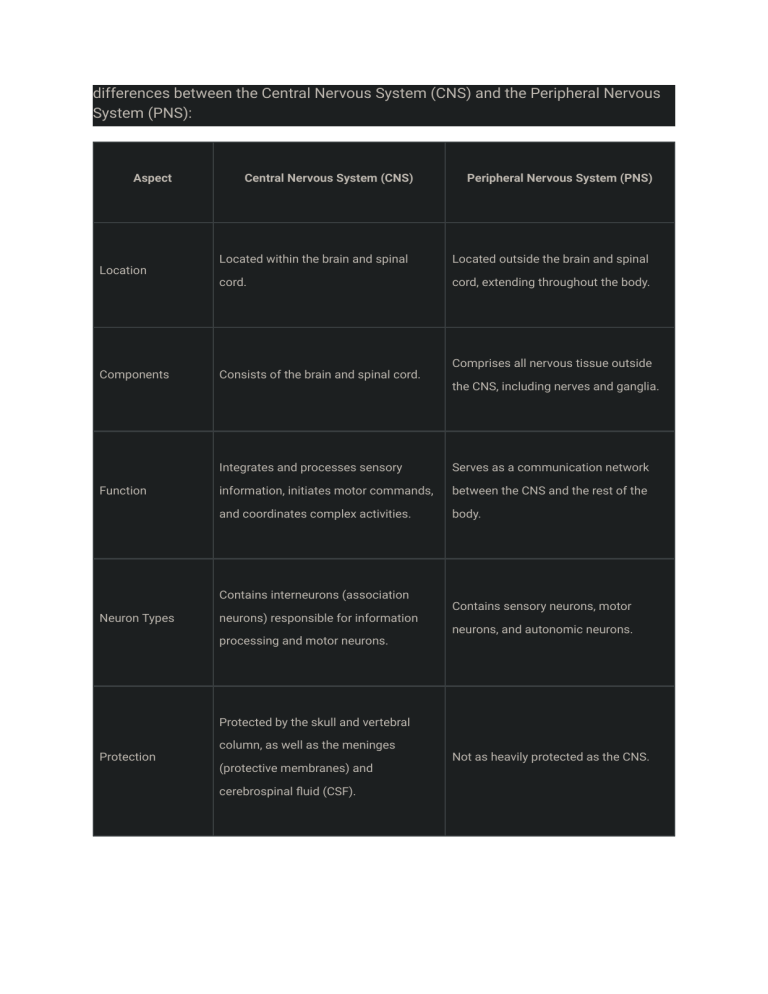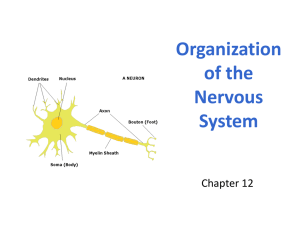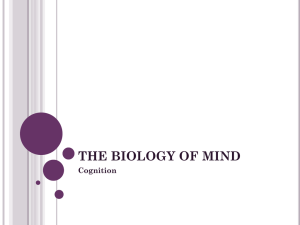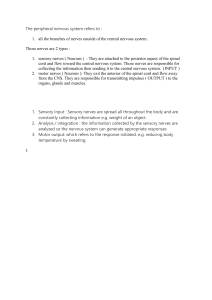
differences between the Central Nervous System (CNS) and the Peripheral Nervous System (PNS): Aspect Location Components Function Central Nervous System (CNS) Peripheral Nervous System (PNS) Located within the brain and spinal Located outside the brain and spinal cord. cord, extending throughout the body. Consists of the brain and spinal cord. the CNS, including nerves and ganglia. Integrates and processes sensory Serves as a communication network information, initiates motor commands, between the CNS and the rest of the and coordinates complex activities. body. Contains interneurons (association Neuron Types Comprises all nervous tissue outside neurons) responsible for information processing and motor neurons. Contains sensory neurons, motor neurons, and autonomic neurons. Protected by the skull and vertebral Protection column, as well as the meninges (protective membranes) and cerebrospinal fluid (CSF). Not as heavily protected as the CNS. Blood-Brain Barrier (BBB) The BBB restricts the passage of certain Lacks the BBB, allowing for easier substances from the bloodstream into exchange of substances between the brain to protect neural tissue. nerves and blood. Contains both white and gray matter, White and Gray with white matter consisting of Matter myelinated axons and gray matter containing cell bodies and dendrites. Voluntary and Responsible for both voluntary and Involuntary Control involuntary (reflex) actions. Cranial Nerves and Spinal Nerves Motor and Sensory Functions Integration of Information The CNS communicates with the body through 12 pairs of cranial nerves and 31 pairs of spinal nerves. Initiates motor commands and receives sensory input from the body and external environment. Predominantly consists of nerves with myelinated and unmyelinated axons, but less gray matter. Primarily involved in voluntary actions. Some autonomic reflexes involve the PNS. These nerves carry sensory and motor signals between the body and the CNS. Transmits sensory information from sensory receptors to the CNS and carries motor commands from the CNS to muscles and glands. Integrates and interprets sensory information, forming perceptions and Acts as a conduit for sensory generating appropriate responses. information to reach the CNS and for motor commands to reach target tissues.







